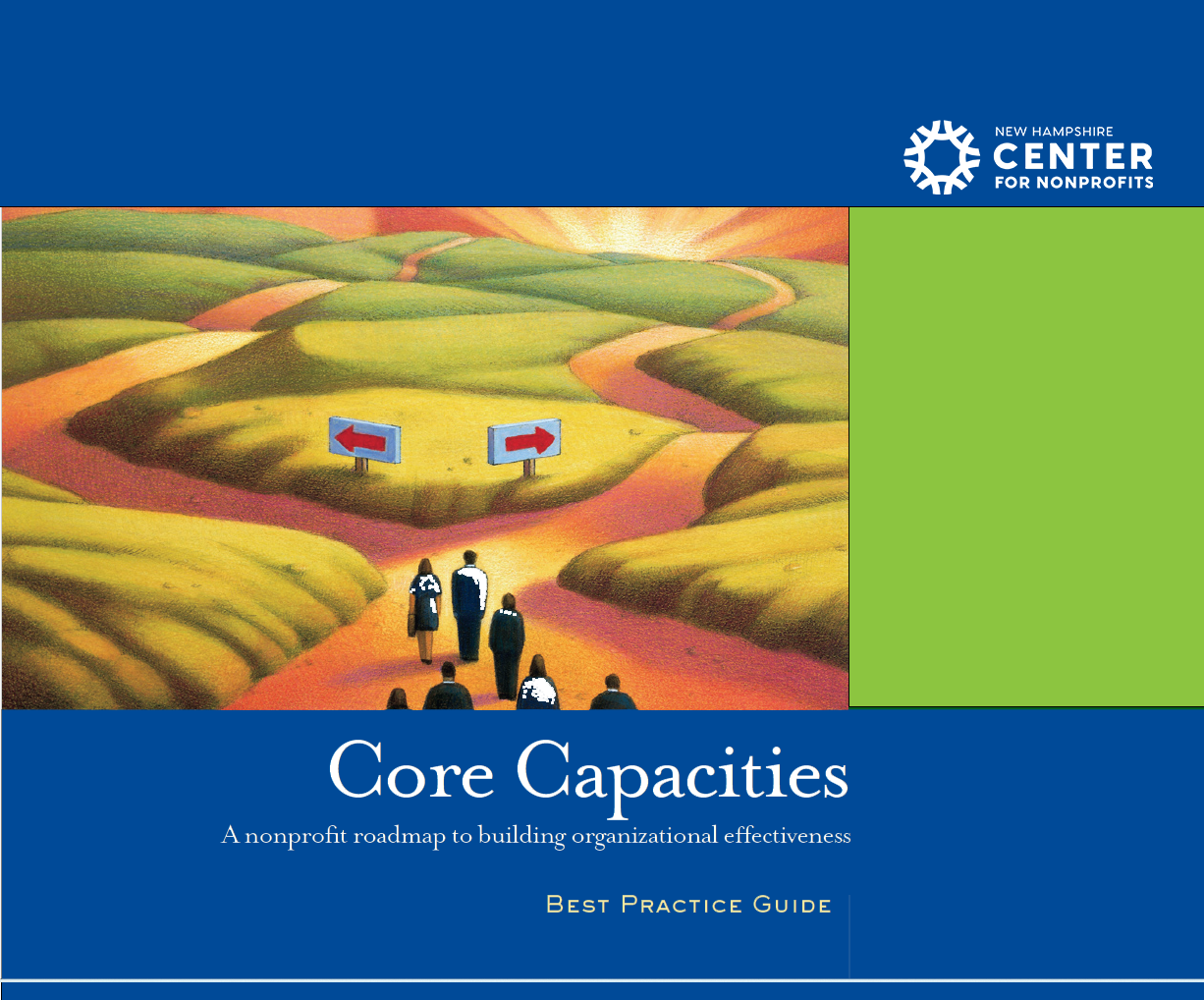Best Practice Guide
Members save 50%!
 The Best Practice Guide provides a close look at practices organizations implement to build the capacity needed to achieve their mission. These capacities can include:
The Best Practice Guide provides a close look at practices organizations implement to build the capacity needed to achieve their mission. These capacities can include:
- sustainable resources
- strong board/staff leadership skills
- effective management practices
The Guide also provides leaders with a “road map” of strategies to employ during each lifecycle stage for building organizational strength.
Order a copy for your organization.
Members: $25.00
Not-yet-members: $50.00
Frequently Asked Questions (FAQs)
Do these Practices Apply to Funders?
Absolutely. Just like service providers, funders are responsible for achieving a mission, providing leadership, responding to change, making effective and efficient use of their resources, and ensuring that they have the human and technical resources they need to get the job done. So for funders also, the underlying principles of best practice are the same.
Who Decided That These Practices are “Best”?
The practices described in this Guide are the compilation of:
- research the TCC group has done nationally on capacity building;
- data TCC has analyzed from hundreds of organizations that have completed the Organizational Self-Assessment Tool;
- a survey of research on best practices;
- feedback from Executive Directors, funders and consultants who piloted the Guide in New Hampshire.
- This wealth of experience and research provide a level of confidence in the Guide. By the same token, the authors of this Guide and the Sector as a whole, are still learning and will continue to refine the guidelines as new information becomes available in the field.
My Organization Is at the Start-Up Stage in Some Areas and the Growing Stage in Other Areas. Is This Normal?
Yes. As noted above, the progression through an organizational life cycle is no more orderly than the progression through a human life cycle. Organizations, like people, often develop faster in one area than in others. While the goal is to move all of the capacities forward together the key is to begin by understanding where you are right now and then making conscious decisions regarding where you want to go. For example, if you find that your organization fits the “Mature” stage in almost every area except those describing financial management, this is a good indication that you need to spend some time bringing your financial systems up to speed.
There is So Much to Do – How do I Decide Where to Begin?
Start with leadership and start small. TCC’s work indicates that Leadership and Adaptive Capacity are the capacities most closely related to achieving mission. While you need all four capacities, if you are missing these, all the systems and skills in the world won’t get the job done. So start by making sure that you have the leadership you need and that you are paying attention to the changes going on around you – both internally and in the community.
Second, start small. It’s easy to get overwhelmed- especially if you try to “fix” it all at once. Instead, pick one area that:
- you are convinced is critical for your organization at this point in time; and, that
- your key leaders (both formal and informal) are excited about working on; and,
- that seems “doable” given everything else you have on your plate. Commit whole heartedly to that area. Articulate a simple plan. Do it. Reflect on what you learn. Celebrate your successes.